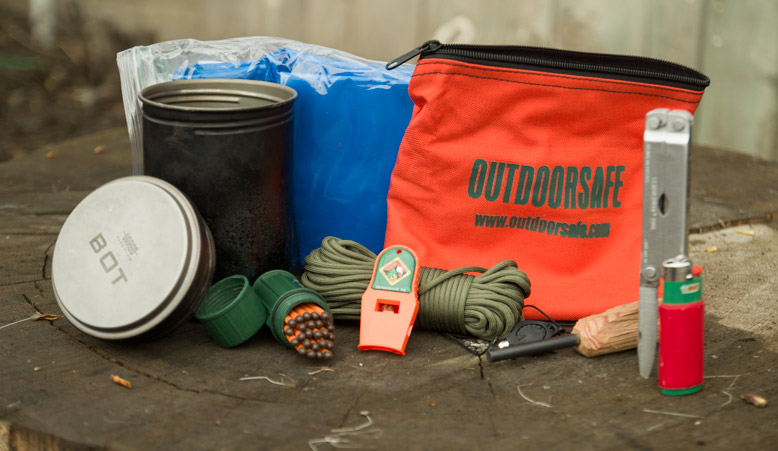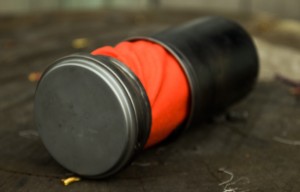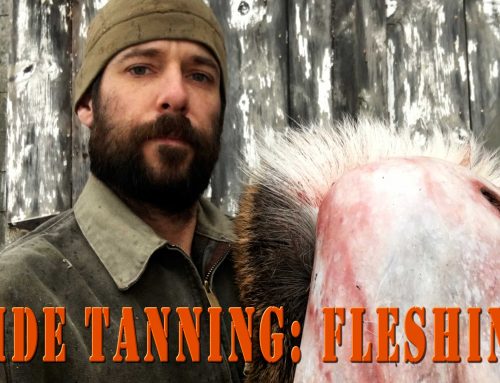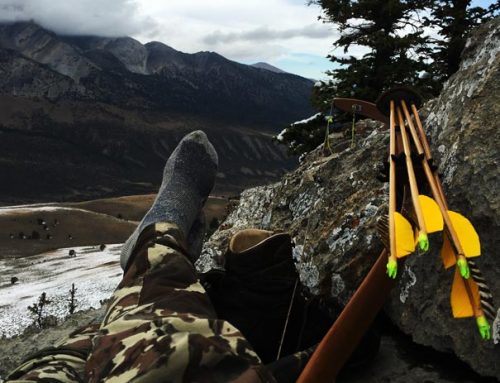[yt4wp-video video_id=”JARygmCTFsg”]
Survival Gear
Whether we’re out shed hunting, mushroom picking, casting a fly, or looking for bears, many of us spend a lot of time in places where… well, you can’t just call for help if you need it. When you’re alone in the backcountry, anything can happen. So, we’ll take a look at some of the survival gear I carry in my survival kit to be prepared for whatever challenges come up.
Now, I want to start off by saying that I hate carrying a bunch of stuff. I like to go as light as possible, but still have the things I need. So what I’ve done is try to consolidate as much as I can. If I’ve got the choice between one tool that’ll do multiple jobs, or multiple tools for different jobs, I’ll go for versatility every time. We’ll talk more about that in a minute.
There are a few things I always have on me, right in my pockets. First is a knife, for obvious reasons. A leatherman is really nice as well and is a bit more versatile than your standard lock blade pocketknife. Second is a lighter, also for obvious reasons. Around the lighter, I’ll make a few wraps of duct tape. You won’t even know it’s there and there are a thousand different uses for it. I mean come on… it’s duct tape. I also always have my compass with me around my neck. I like a compass with a sighting mirror, which can also be used as a signal mirror if needed. The compass lanyard is made of 550 paracord; again, a thousand different uses.
Before we go any further, I want to take a quick minute to talk about paracord. There’s a lot of stuff out there that people call paracord which isn’t. Real paracord will have 7 strands of reverse twist nylon string inside of it. Each of these strings is rated at a breaking strength of about 30lbs. You can pull the cores out and use them for additional cordage, snares, fishing line, whatever. If you need to really bind something together tightly, pulling the cores out will allow the shell to cinch down on itself better. I’ve seen some really cool fishing lures made from paracord as well. I’ve also replaced my boot laces with paracord, so that’s an additional 10 feet if I need it.
I try’n keep a little survival gear kit together so it’s easy to move around if I’m changing packs, which I do pretty often depending on what I’m up to. I’m not much of a product pusher, but I’ve got to tell you about this one thing because I’ve looked for something just like it for years and finally found exactly what I was looking for. Basically, I wanted a lightweight metal bottle that didn’t neck down. I wanted to be able to get stuff in and out of it easily so I could use it out in the field. The titanium BOT made by Vargo outdoors fits the bill and it’s versatile to boot. I use it to contain my emergency kit. It’s got a rubber o ring so it’s water tight. The lid is shaped so you can turn it over to speed water boiling. And it’s big enough you could cook a whole meal in it if you needed to.
Inside this, I’ve got a bag that you could use as a basket or to carry water, or whatever. I’ve also go a heavy duty, extra long trash bag (available from outdoorsafe.com), more duct tape, fishing kit, waterproof storm matches (these things are amazing), a ferro rod with a fatwood handle, some petroleum soaked cotton balls and a little tinfoil. The trash bag is one of the most important things in my survival kit. Cut a hole on the edge, just below the corner and large enough for your face, slip this thing over you and it’ll keep you dry. Don’t make the mistake of cutting a head and arm holes. That’s just a good way to get wet and cold. If you need to, you can open it all the way up to use it as a ground cloth, or to water proof a shelter, or catch rainwater.
I always like to have a couple different ways to start a fire. The lighter in my pocket is what I’ll use 99% of the time, but if you get in a bind, it may not work. That’s where the ferro rod, matches, and cottonballs come into play. Pull one of the cotton balls apart and place it on the other side of your knife blade, (I like to stick my knife down into a piece of wood a little to help hold it steady) then pull the rod toward you and shower sparks down into the cotton. You can get a fire going in about any condition with these things. Wrap that cottonball in a foil envelope, exposing only a portion of it, and it’ll burn for a lot longer.
In my pack, I’ve usually got an extra skinning knife, more paracord and carabineers (for block & tackle), and if it’s cool out, a down vest. I also usually keep a few zip ties and a pencil and paper in there. One of the things you may have noticed is that I’ve got things kind of scattered out, i.e. they’re not all in one sack. I did that on purpose. You never know what might happen out there and if, for some reason, I lose my pack, I will at least still have the things I’ve got on me, in my pockets.
But, when it comes right down to it, your most important asset is what’s between your ears. Use your head and you can figure out how to use what you’ve got on you in unconventional ways to solve many of the problems you’ll face out there. What you have in your survival kit is going to depend a lot on where you spend time, but many of the things I’ve shown here are applicable pretty much anywhere. I just hope I’ve been able to give you some ideas on what to carry in your survival gear kit. Now, get out there and have fun… and be safe.







